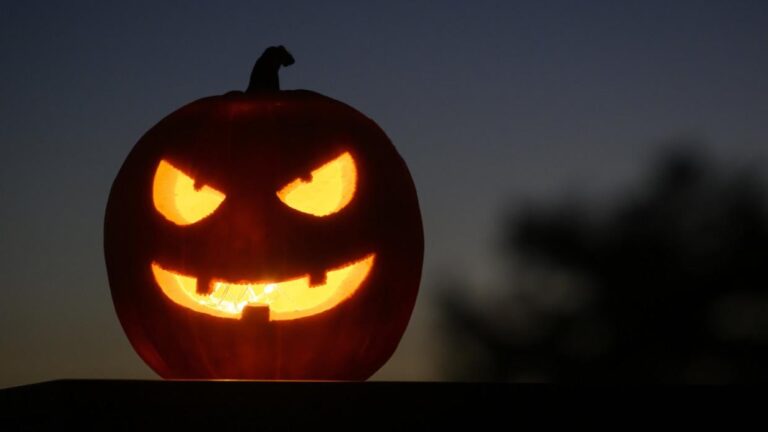In Spain, the observance of All Saints’ Day, a longstanding Christian tradition honoring deceased loved ones, is increasingly sharing space with the rising popularity of Halloween. Once a solemn occasion marked by prayer and remembrance, November 1st now reflects a cultural crossroads where ancient religious customs coexist-and sometimes compete-with modern festivities imported from abroad. This evolving dynamic highlights broader shifts in Spanish society, as traditional faith practices face challenges amid changing cultural trends and generational attitudes.
Halloween’s Rising Popularity Challenges Traditional All Saints Day Observances in Spain
In recent years, the festive atmosphere on October 31st in Spain has noticeably shifted from solemn remembrance to spirited celebration. While All Saints’ Day (DÃa de Todos los Santos) traditionally serves as a day for families to honor deceased relatives by visiting cemeteries and attending mass, the creeping influence of Halloween is changing these customs. Shops and public spaces brim with pumpkins, costumes, and themed decorations that attract younger generations more attuned to the globalized pop culture surrounding the holiday. This cultural adaptation has ignited debate among communities balancing respect for a centuries-old Christian tradition with the allure of commercialized festivities.
Experts attribute the rise of Halloween in Spain to a mix of factors, including social media trends, increased tourism, and the entertainment industry’s portrayal of the holiday. A recent survey highlighted the evolving preferences:
- 42% of Spaniards under 30 celebrate Halloween-themed events
- 58% still attend family gatherings or cemetery visits on All Saints’ Day
- 33% participate in both traditions
| Activity | Participation Rate | Demographic |
|---|---|---|
| Cemetery Visits | 70% | Ages 50+ |
| Halloween Parties | 55% | Ages 18-35 |
| Mass Attendance | 65% | All age groups |
Cultural Shifts and Religious Decline Shape Spain’s Approach to Commemorating the Dead
In recent years, Spain has witnessed a palpable transformation in how communities honor the departed, balancing centuries-old Christian customs with emerging secular and international influences. Traditional observances such as visiting cemeteries and attending Mass on All Saints’ Day are increasingly competing with contemporary festivities inspired by global phenomena like Halloween. This cultural convergence reflects a society navigating between respect for its heritage and the allure of modern, often commercialized celebrations.
Key factors shaping this shift include:
- Demographic Changes: Younger generations identifying less with formal religious practices.
- Urbanization: Reduced access to family burial sites as people migrate to cities.
- Media Influence: Increased exposure to Anglo-Saxon traditions through television and social networks.
| Aspect | Traditional Practice | Modern Trend |
|---|---|---|
| Religious Attendance | High participation in church services | Declining numbers, especially among youth |
| Cemetery Visits | Family gatherings, flower offerings | Less frequent, replaced by social events |
| Symbolism | Crosses and candles | Costumes and pumpkins |
Balancing Modern Festivities and Heritage Preservation Strategies for Spain’s All Saints Day
In recent years, Spain’s rich All Saints’ Day traditions have faced an unprecedented challenge as Halloween gains popularity, especially among younger generations. While October 31st is becoming synonymous with costumes and trick-or-treating, many regions keep their centuries-old customs alive, such as visiting cemeteries to honor deceased relatives with flowers and candles. This cultural balancing act is prompting communities and policymakers to develop innovative preservation strategies that acknowledge modern festivities without eroding deeply rooted religious practices.
Efforts to safeguard Spain’s heritage include educational campaigns in schools, local government initiatives to promote traditional ceremonies, and collaborations with cultural organizations. These measures aim to create a dialogue between the emerging secular festivities and historical commemorations. Some of the key approaches being employed include:
- Community-led restoration of key sites associated with All Saints’ Day rituals.
- Incorporating local legends and stories into Halloween events to maintain cultural relevance.
- Organizing workshops that teach younger generations about the significance of honoring ancestors.
| Strategy | Goal | Impact |
|---|---|---|
| Educational Outreach | Raise awareness of traditional customs | Higher participation in cemetery visits |
| Cultural Event Integration | Bridge modern and traditional observances | Improved community engagement |
| Local Government Funding | Support heritage site maintenance | Preservation of historical landmarks |
To Wrap It Up
As Spain navigates the complex interplay between contemporary celebrations and longstanding religious observances, All Saints’ Day stands as a poignant example of cultural coexistence. While Halloween’s growing popularity reflects broader global influences, the traditional Christian remembrance continues to hold significant meaning for many Spaniards. This evolving dynamic underscores not only changing social attitudes but also the enduring ways communities choose to honor heritage and memory in a rapidly shifting cultural landscape.




